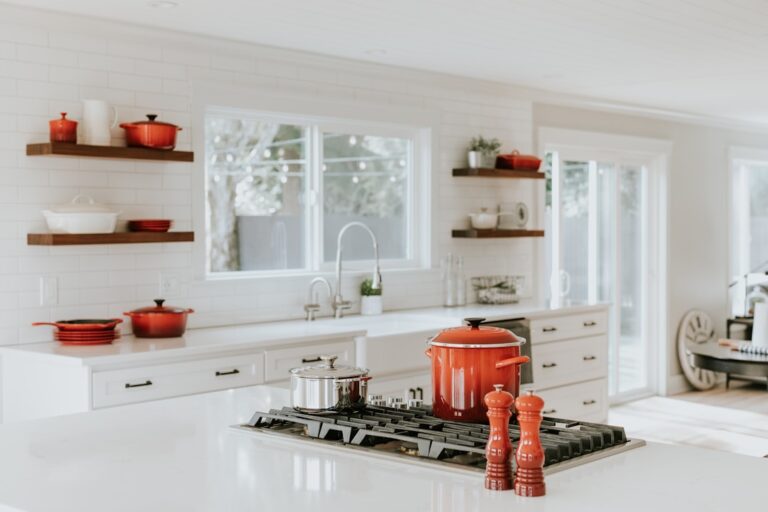Effortless Blender Cleaning Tips

Maintaining a clean and hygienic kitchen is essential for a healthy home. A quick daily cleaning routine can keep your blender in optimal condition and prevent the accumulation of stubborn stains and odors. To clean the blender, first unplug it and disassemble the removable parts, including the pitcher, lid, and blades.
Rinse these components with warm, soapy water and use a soft brush to remove food residue. Clean the blender base with a damp cloth to eliminate spills or splatters. The gasket or seal around the blade assembly requires special attention, as it is prone to accumulating food particles and liquids, potentially leading to mold and mildew growth.
Remove the gasket from the blade assembly and wash it thoroughly with warm, soapy water. Ensure it is completely dry before reassembling the blender. Disinfect the blender’s exterior with a disinfectant spray or a mixture of water and vinegar to eliminate bacteria.
Regular cleaning of a blender is crucial for both hygiene and the appliance’s longevity. A daily cleaning routine helps prevent the build-up of stubborn stains and odors, ensuring the blender continues to function effectively. By dedicating a few minutes each day to cleaning the removable parts, gasket, and exterior, users can avoid the need for more intensive deep cleaning in the future.
This practice also helps prevent the growth of mold and mildew, which can be challenging to remove once established. Consistent cleaning habits contribute to a well-maintained blender that can provide reliable service for an extended period.
Key Takeaways
- Establish a quick and easy daily cleaning routine to keep your blades and seals in good condition
- Use deep cleaning methods for stubborn stains that cannot be removed with daily cleaning
- Prevent build-up by regularly cleaning and drying your blender after each use
- Clean the blades and seals thoroughly to avoid food residue and bacteria build-up
- Use natural cleaning solutions like vinegar and baking soda to keep your blender clean and safe to use
- Properly store your blender to avoid mold and mildew growth
- Schedule regular maintenance and check-ups to ensure your blender is in good working condition
Deep Cleaning for Stubborn Stains
Disassembling and Soaking Removable Parts
To start the deep cleaning process, disassemble the blender and soak the removable parts, such as the pitcher, lid, and blades, in a mixture of warm water and dish soap. Allow them to soak for at least 30 minutes to loosen any dried-on food particles or stains.
Removing Stubborn Stains and Odors
For stubborn stains or odors, create a cleaning solution using equal parts water and white vinegar. Fill the blender pitcher halfway with the vinegar solution and run it on high speed for a few minutes. The acidic properties of the vinegar will help break down any build-up and eliminate odors. After blending, pour out the solution and rinse the pitcher thoroughly with warm water.
Additional Cleaning Techniques
For particularly stubborn stains, use a paste made from baking soda and water to scrub away the build-up. Apply the paste to the affected areas and let it sit for a few minutes before scrubbing with a soft brush. Additionally, pay attention to the base of the blender, using a damp cloth and a mild detergent to wipe down the base, paying special attention to any crevices or buttons where food particles may have accumulated.
By incorporating these deep cleaning techniques into your regular maintenance routine, you can keep your blender looking and performing like new for years to come.
Tips for Preventing Build-Up

Preventing build-up in your blender is key to maintaining its performance and prolonging its lifespan. There are several tips you can follow to prevent stubborn stains and odors from developing in your blender. Firstly, always rinse the blender pitcher and lid immediately after each use to remove any food residue or liquids.
This will prevent them from drying on and becoming more difficult to remove later on. Another tip is to avoid blending hot liquids in your blender, as this can cause steam to build up inside the pitcher and lead to condensation that can promote mold growth. Instead, allow hot liquids to cool before blending them or use a specialized blender designed for hot ingredients.
Additionally, be mindful of what you are blending and avoid ingredients that are prone to staining or leaving behind strong odors, such as turmeric or garlic. If you do need to blend these ingredients, consider using a separate container or cleaning the blender immediately after use. Furthermore, regular maintenance is key to preventing build-up in your blender.
Be sure to check the gasket or seal around the blade assembly regularly for any signs of wear or damage, as this can lead to leaks and build-up over time. By following these tips and incorporating them into your daily routine, you can prevent stubborn stains and odors from developing in your blender, keeping it clean and ready for use at all times.
Cleaning the Blades and Seals
| Blade/Seal Type | Cleaning Frequency | Cleaning Method |
|---|---|---|
| Main Rotor Blades | After every flight | Wipe with clean cloth and mild detergent |
| Tail Rotor Blades | Weekly | Use compressed air to remove debris |
| Engine Seals | Monthly | Inspect for wear and clean with approved solvent |
The blades and seals of your blender are crucial components that require regular cleaning to ensure optimal performance and hygiene. Over time, food particles and liquids can become trapped in these areas, leading to build-up and potential mold growth. To clean the blades, start by disassembling the blade assembly from the pitcher and carefully removing any food particles or residue with a soft brush or sponge.
Be sure to handle the blades with care to avoid injury. Next, soak the blade assembly in warm, soapy water for at least 15 minutes to loosen any remaining build-up. Use a small brush or toothbrush to gently scrub around the blades and remove any stubborn residue.
Rinse the blade assembly thoroughly with warm water and allow it to dry completely before reassembling it onto the pitcher. It’s important to ensure that no moisture is left behind, as this can lead to mold growth over time. In addition to cleaning the blades, it’s important to pay attention to the gasket or seal around the blade assembly.
This area is prone to trapping food particles and liquids, leading to build-up and potential mold growth if not properly maintained. To clean the gasket, remove it from the blade assembly and wash it thoroughly with warm, soapy water. Be sure to dry it completely before reassembling it onto the blade assembly.
By regularly cleaning the blades and seals of your blender, you can ensure that it remains in top condition and ready for use at all times.
Using Natural Cleaning Solutions
Using natural cleaning solutions is not only effective for maintaining a clean blender but also safer for your health and the environment. There are several natural ingredients that can be used to clean your blender without harsh chemicals or toxins. One popular natural cleaning solution is white vinegar, which has acidic properties that can help break down stubborn stains and odors.
Simply fill the blender pitcher halfway with equal parts water and white vinegar, then run it on high speed for a few minutes before rinsing thoroughly with warm water. Another natural cleaning solution is baking soda, which is abrasive enough to scrub away build-up without scratching the surface of your blender. Create a paste using baking soda and water and apply it to any stubborn stains or odors in the pitcher or on removable parts.
Let it sit for a few minutes before scrubbing with a soft brush or sponge, then rinse thoroughly with warm water. Additionally, lemon juice is another natural ingredient that can be used to clean your blender. The acidic properties of lemon juice can help break down build-up and eliminate odors without leaving behind a harsh chemical smell.
Simply fill the blender pitcher with equal parts water and lemon juice, then run it on high speed for a few minutes before rinsing thoroughly with warm water. By using natural cleaning solutions such as white vinegar, baking soda, and lemon juice, you can effectively clean your blender without exposing yourself or your family to harsh chemicals or toxins. These natural ingredients are safe, affordable, and readily available, making them an ideal choice for maintaining a clean and hygienic kitchen.
Proper Storage to Avoid Mold and Mildew

Disassemble and Dry Removable Parts
After each use, disassemble the blender and thoroughly dry all removable parts before storing them. This includes the pitcher, lid, blades, and gasket or seal around the blade assembly. Use a clean dish towel or paper towel to dry each part completely before reassembling the blender.
Store in a Cool, Dry Place
It’s also important to store your blender in a cool, dry place away from direct sunlight or heat sources that can promote mold growth. Avoid storing the blender with any remaining liquids inside, as this can lead to condensation and create an ideal environment for mold and mildew to develop.
Additional Tips for Mold Prevention
Instead, empty out any remaining liquids after each use and allow all parts to air dry completely before storing them. Consider using a breathable cover or cloth bag to protect your blender from dust and moisture when not in use. This will help prevent mold spores from settling on the surfaces of your blender and creating an environment for mold growth.
By following these proper storage practices, you can avoid mold and mildew growth in your blender and ensure that it remains clean and ready for use at all times.
Maintenance and Regular Check-Ups
Regular maintenance and check-ups are essential for keeping your blender in top condition and preventing potential issues from developing over time. Be sure to inspect all removable parts such as the pitcher, lid, blades, and gasket regularly for any signs of wear or damage. This includes cracks, chips, or discoloration that may indicate that it’s time for replacement.
In addition to visual inspections, be mindful of any changes in performance such as unusual noises or difficulty blending ingredients smoothly. These may be signs that there is an issue with the motor or blade assembly that requires attention. If you notice any changes in performance, be sure to unplug the blender and disassemble it for a closer inspection.
Furthermore, consider scheduling regular check-ups with a professional appliance technician to ensure that your blender is functioning properly. A technician can perform a thorough inspection of all components, including the motor, blade assembly, gasket or seal, and controls to identify any potential issues before they become more serious problems. By incorporating regular maintenance and check-ups into your routine, you can keep your blender in top condition and avoid potential issues from developing over time.
This will not only prolong the lifespan of your appliance but also ensure that it continues to perform effectively for all your blending needs. In conclusion, maintaining a clean and hygienic blender is essential for a healthy home kitchen environment. By following a quick and easy daily cleaning routine, incorporating deep cleaning techniques for stubborn stains and odors, preventing build-up through proper storage practices, using natural cleaning solutions, and scheduling regular maintenance check-ups with a professional technician, you can ensure that your blender remains in top condition for years to come.
With these tips in mind, you can enjoy the benefits of a clean and well-maintained blender that is ready for use at all times.
If you’re looking for more kitchen cleaning tips, check out this article on how to keep your kitchen clean and organized. It offers helpful advice on maintaining a tidy and efficient kitchen space, which can complement your efforts to keep your blender clean.
FAQs
What are the basic steps to clean a blender easily?
To clean a blender easily, start by filling the blender halfway with warm water and a few drops of dish soap. Then, blend the soapy water for a few seconds, and finally, rinse the blender thoroughly with clean water.
Can I put my blender in the dishwasher?
Most blender jars and lids are dishwasher safe, but it’s always best to check the manufacturer’s instructions to be sure. Additionally, the blender’s motor base should never be submerged in water or put in the dishwasher.
How do I remove stubborn stains and odors from my blender?
To remove stubborn stains and odors from a blender, you can try blending a mixture of warm water, baking soda, and lemon juice. Let the mixture sit in the blender for a few hours before rinsing it out. You can also use a mixture of vinegar and water to help remove stains and odors.
Is it safe to use a brush to clean the blender blades?
It is not recommended to use a brush to clean the blender blades, as it can be dangerous and may damage the blades. Instead, use a sponge or cloth to carefully clean around the blades.
How often should I clean my blender?
It’s best to clean your blender after each use to prevent food residue from building up and becoming difficult to remove. Regular cleaning will also help to prevent odors and bacteria from forming.






